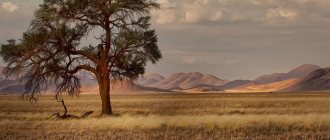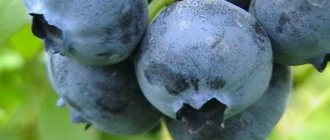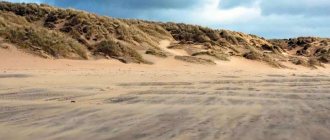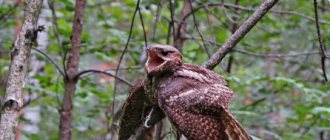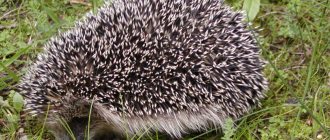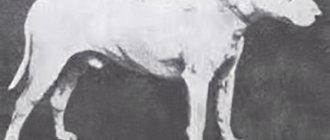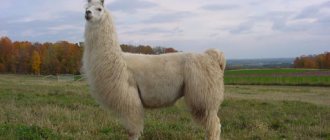4.7
Average rating: 4.7
Total ratings received: 866.
4.7
Average rating: 4.7
Total ratings received: 866.
Deserts may seem empty and lifeless only at first glance, but in fact this natural area can be very different. In addition to sandy deserts, in nature there are clayey, gravelly, saline and even ice deserts of the Arctic and Antarctica. They occupy vast territories and significantly influence the Earth's climate.
The material was prepared jointly with a teacher of the highest category, Tatyana Nikolaevna Akulinkina.
Experience as a teacher - more than 48 years.
What is a desert
A desert is an extremely arid region of the globe, poor in water, vegetation and wildlife. There are no rivers, seas, or lakes in this area, so precipitation is very rare. Even if there is a heavy downpour, the moisture will quickly evaporate due to the hot weather.
Don’t think that the desert is lifeless: there is not only sand and sun there. If you get there in the spring, you can even watch the greening grass and birds singing. But closer to summer, the sun's rays burn out the vegetation, in the place of which yellow waves and dunes appear. Desert areas are not only sandy, but also rocky, saline, clayey and even snowy.
Reproduction
Having awakened from winter sleep, the forest dormouse is looking for a partner for family life. Males awaken earlier than females. They begin to run along the branches of bushes and trees, leaving marks everywhere. Later, females emerge from their winter shelters. They attract the attention of males with special sounds, then they look for the places of their marks and leave their own on them.
The female remains pregnant for approximately twenty-eight days. During this period, she improves her home:
- makes repairs;
- throws away unnecessary things;
- replaces worn out parts;
- prepares a place for the kids.
Females evict males from the nest before the birth of babies in one day. Family life ends here. Females usually reproduce once a year. A female sometimes gives birth to up to eight cubs. When naked, pink babies are born, the forest dormouse constantly licks and grooms them. After fifteen days, the babies' eyes open and fluff appears on their bodies. The female leaves her babies for a short time in order to have a snack.
If the cub accidentally falls out of the nest, the mother immediately finds it and returns it to its place. When a baby forest dormouse turns 1.5 months old, it becomes independent. Some of the cubs remain to live in the nest. If there is enough food in the area, then they all live together.
How are deserts formed?
The formation of desert landscapes is associated with the uneven distribution of heat and moisture and the division of the planet into geographical zones. The formation of winds depends on temperature indicators and atmospheric pressure. In equatorial-tropical latitudes, trade winds prevail, preventing the formation of clouds and rainfall. Under such conditions, solar radiation and dry air masses increase. Maximum temperatures in the tropics and subtropics can reach up to +50 °C. Most often, desert places in these latitudes form in intermountain depressions.
Temperate deserts occur more frequently in Central Asia. They are fenced off from cyclones and monsoons by mountains, so there is very little rainfall here. Even if cold air masses break through here, they quickly warm up under the influence of heat (up to +45 °C).
The desert zone formed in the north and south of the equator, between 15° and 45° latitude.
This was also influenced by cold currents in tropical areas. In addition to the lack of precipitation and high radiation, the formation of a desert area is influenced by the orographic structure of the landscape, its continental or oceanic location. Interesting fact : you can easily bake an egg in hot desert sand during the daytime.
Where does it live?
Forest dormice are numerous, there are 28 species. These animals inhabit the forest areas of the following regions:
- European countries;
- Central Asia;
- China;
- North Africa;
- Kazakhstan;
- Japan;
- central and western European region of Russia.
Geographical features
Map of the location of deserts on Earth
Deserts formed on ancient land areas. In Africa, Asia and Australia they are located at an altitude of 200-600 m above sea level. In North America it is much higher - 1000 m. Desert areas usually surround or border mountains. Elevations delay the entry of cyclones and rainfall occurs in mountainous areas. Deserts receive little or no precipitation. The surface layer of soil depends on the geology of the territory and the natural phenomena affecting it.
Climate
Temperatures in the desert can exceed 50 degrees Celsius.
Climatic conditions in deserts are warm and dry. They depend on geographical location. The dry air of the area does not protect the soil from solar radiation. In the Sahara, the maximum temperature can reach +58 °C. At night the indicator drops to 0°C or even to minus level. The soil cools quickly. The temperature range can be from 20 °C to 40 °C.
Temperate deserts have very harsh winters: the thermometer drops to -50 °C. In this area, winds always blow due to excessive heating of the soil. They provoke the formation of sand and dust storms.
Interesting: Rivers of Russia - List, length, description, characteristics, location, photos and videos
Relief
A desert in Arizona with a varied topography.
The topography of deserts is formed under the influence of wind and water. They lead to erosion, blowing, and accumulation of sand masses. Temporary or permanent watercourses influence the formation of terrain. These include deep, never-ending rivers (Nile, Colorado). After heavy rain, temporary water flows appear. They create deposits near slopes and form cones. Sometimes these peaks can merge with each other and form bajadas. Water flows can form ravines, gullies, and badlands.
The wind creates a variety of landforms. It carries dust over long distances. Flying sand settles on rocks, and a landscape is formed in the form of towers, spiers, windows, arches. Sometimes an air mass carries away all the sand from the surface, and only colorful pebbles remain. This phenomenon can be observed in the Arabian Desert and the Sahara.
Sand and dust may accumulate in other areas. Dunes form there. They become denser in places where the wind encounters an obstacle. There are dunes that rise up to 300 m. These accumulations are fixed by plants or moved further by winds. In a year, a dune can move 10 m. Sometimes in the desert there are dunes, crescent-shaped deposits with high slopes and horn-shaped points. Due to the wind and the uneven distribution of sand, depressions are formed in deserts.
Interesting fact : Canada has the smallest desert - Carcross. Its territory occupies only 2.5 km2.
Interesting Facts
Deserts are not at all lifeless areas. Life is also in full swing here, only mainly at night.
Here are just a few interesting facts.
- One of the driest and hottest deserts is Death Valley (California, USA). However, the flora and fauna here is very diverse. 44 species of reptiles, 40 species of mammals, 15 species of birds live here, and more than 500 species of plants grow. There are even about 13 species of fish in the small reservoirs of karst caves.
- The driest desert is the Atacama Desert (Chile). There has been no significant rainfall here since the 16th century. Nevertheless, the inhabitants of Atacama have invented so-called “fog eliminators”, with which they can collect up to 18 liters of water per day.
- All inhabitants adapt to life in conditions of minimal moisture. For example, the Australian moloch lizard collects moisture with its own skin. The lizard burrows deep into the sand and absorbs the necessary moisture with its skin.
- The winds blowing in the Sahara can carry huge amounts of sand and dust. For example, the wind blowing during the day can move so much sand that it would take a train about 400 km long to transport it.
- In the Arctic desert you can see one of the most mysterious phenomena on the planet - spherulites. These are perfectly round stone balls, the origin of which is still unknown.
This is only a small part of the unique and mysterious phenomena characteristic of deserts.
Desert classification
Photo of a rocky desert
Depending on the type of surface and the nature of the soil, the following types of deserts are distinguished:
- Sandy . Formed on loose sediments. Covered with grass and bushes. Deserts consist of only 10-15% sand.
- Loess . They form in piedmont plains on loess layers.
- Loamy . Formed in plains of loam.
- Takyr clayey . They occur in river mouths and plains near mountains.
- Clayey . They appear in clayey lowlands.
- Sand and pebble, pebble . They form near mountains and on plateaus with a gypsum composition.
- Rubble-pebble . They occur on young plains near mountains and on plateaus.
- Rocky . They are observed in the hills and low mountains.
- Salt marshes . They form in saline areas and on the sea coast. Salt in them predominates over other elements.
Depending on precipitation, deserts are divided into coastal, Central Asian and Mediterranean types. The first type includes the Atacama and Namib, where cold currents approach the warm coasts. In the deserts of Central Asia (Betpak-Dala, Gobi) there is little precipitation throughout the year, so vegetation is present there. In the Sahara, Kara-Kum, precipitation falls within three weeks, after which nature blooms for a short period of time.
Description
The forest dormouse simultaneously resembles both a squirrel and a mouse. The animal's favorite activity is climbing trees. Coloring, size, appearance and behavior depend on the area in which the dormouse settles. The forest dormouse is a small animal with the following features:
- oblong-shaped body;
- narrow head and sharp muzzle;
- dark, round eyes, strongly prominent on the face with a characteristic shine;
- The ears are oval shaped and large in size.
The forest dormouse is clean and carefully cares for its body. She is able to sit for several hours and comb out the fibers of her tail and carefully sort through them.
The meaning of deserts
A vineyard in a desert
What role can sandy mountains, highlands, small hills, dusty plains, lake depressions and dry river valleys play? In deserts, people graze livestock and cultivate some plants. Animals feed there on moss and grass that grows due to condensation on the soil. In oasis places, where there is enough sun and water, cotton, grapes, melons, peaches, and apricots are grown. Only small desert areas are suitable for human activity.
Interesting fact : the color of sand in the Australian Simpson Massif is red. Local residents call it the “Red Desert”.
Fauna
Deserts have developed harsh conditions. It is very difficult for animals to survive where there is no water, dry air, or winter coolness. In such an area there are inhabitants constantly moving in search of food and drink. Here you also need to constantly seek shelter from predators.
Interesting: Tundra - description, location, features, photos and videos
Camel
Camel
The main inhabitant of the desert is the camel. This large animal has adapted to life in arid areas. It has one or two humps on its back, depending on the species. They contain fat, which, when oxidized, turns into water and helps quench thirst. Humps also regulate body temperature and prevent it from dropping. An adult can weigh up to 800 kg. The coat color varies from red-gray to dark brown. The animal is so adapted to desert conditions that it can even lie on hot soil. It uses wormwood, camel thorn, saxaul, and hodgepodge as food.
Interesting fact : the camel has an excellent sense of smell. It can sense moisture or water from a distance of 30-60 km.
Caracal
Caracal
Caracals are found in the desert regions of Africa, Asia, and Kazakhstan. This feline animal is also called the “steppe lynx.” An adult animal weighs from 10 to 20 kg. You can recognize it by the tassels at the ends of its ears. The unusual structure of the paws and the pads on them help the caracal move along the sand. They cut up prey (rodents, reptiles, birds) with sharp fangs and claws. This animal can go for a long time without drinking. During the night, the caracal covers a distance of up to 20 km.
Striped hyena
Striped Hyena
Hyenas are found in African and Asian desert areas. This mammal is distinguished by an elongated muzzle, large ears, and a powerful jaw. The color of the coat varies from straw-gray to brown-gray. There are dark stripes on the body, head and legs. In addition to rodents, birds and reptiles, the hyena feeds on carrion.
Scorpion
Scorpio Scorpions
live in hot deserts. Some species are dangerous to humans due to their poison. The animal's body is hidden under a chitinous shell. There are six pairs of limbs. During the day they hide in holes, and at night they hunt insects and spiders. Scorpions have a special sting with which they kill their prey.
Interesting fact : a scorpion can go without food for up to 2 years without harm to health.
Gray monitor lizard
Gray monitor lizard
A rather large lizard is the gray monitor lizard that lives in the desert areas of Asia and Africa. It can reach up to 50 cm in length. The body color is sandy gray, light brown. The animal is active during the day. Lays eggs for reproduction. This predator feeds on rodents, snakes, turtles, and birds.
Diet
Forest dormouse is a nocturnal animal. During the daytime she sleeps, and devotes the evening hours to searching for food. The food of the forest dormouse is varied. Her diet consists of:
- from the fruits of forest trees and their seeds;
- berries, nuts, acorns;
- rose hips and hawthorn fruits;
- bark of shoots of bushes and trees and buds;
- insects;
- snails, worms, mollusks.
Having encountered a bird's nest in which there are eggs or chicks, the rodent, without hesitation, will eat them. The forest dormouse has very good hearing. She can easily catch the quiet sounds of moving snails, worms, and insects. Sonya freezes for a second, determines where the sound is coming from, quickly moves in that direction, and overtakes her prey. The forest dormouse will not disdain to dine on other, smaller rodents or a small lizard.
Flora
The nature of deserts is varied. Local low plants are characterized by the presence of thorns, a powerful root system, and fleshy leaves. Long roots make their way to underground waters, and the leaves retain moisture for a long time. Cacti, baobabs, tumbleweeds, and jojoba trees are found here. When precipitation occurs, some species even bloom.
Camel-thorn
Camel thorn
Jantaku (camel thorn) is helped to survive in the desert by roots that penetrate 20 m deep. This pasture plant is a real salvation for animals. It is branched and has spines in the axils of the leaves. Found in Central Asia and Kazakhstan. The above-ground part of the plant is rich in various healing and nutritional properties.
Comber
Comb plant
In African and Asian deserts, a shrub with small lilac flowers grows - the comb plant. It is characterized not only by excellent survivability, but also by decorative properties. The plant is undemanding to soil and tolerant of salt. The most important thing for him is the abundance of light. It anchors the sand with its roots.
Prickly curly
Spiny curlew
You can often find spiny curlew in deserts. It is a curly shrub with whitish leafless branches. Characterized by small leathery leaves and lateral racemes. Camels enjoy the plant.
Lepidoplasty
Lepidoplasty moss
The most adapted to desert conditions is the lepidoplasty moss. The plant can remain in a dormant (dry) state for several years and resemble a dense ball. As soon as water gets on it, it instantly straightens out. For this property, club mosses are also called “resurrection moss.” It grows best in the North American Chihuahuan Desert.
Interesting: How do plants cope with drought in the desert? Description, photo and video
Triody
Triodia
Triodia or spinifex is found in the Australian deserts. This is a grass with hard leaves that can reach a height of up to 1.5 m. The thickets of the plant are distinguished by a gray-blue color. Horizontal shoots of grass hold the sand together well.
Interesting fact : Australian aborigines made bread from triodia grains in the Middle Ages.
Lifestyle
The forest dormouse lives in bushes or trees. She especially likes thickets and hollow trees. For housing, the forest dormouse chooses abandoned bird nests or hollows located in trees. She can evict the birds living there from a nest or hollow.
Sometimes the forest dormouse builds its own home. She makes the frame from flexible branches. Then he covers it with grass, fluff, and dry leaves. The house is built in thickets of thorny bushes, which allows protection from predators. The forest dormouse arranges the interior of the home in a businesslike manner, placing fluff, dry grass, and wool in it. In the neighborhood where one rodent lives, you can find 7-8 houses. The forest dormouse leaves the clogged nest and settles in another.
For the winter, the forest dormouse builds its shelter approximately 30 centimeters deep from the surface of the earth. When winter comes, the animal goes into hibernation.
By winter, the dormouse accumulates subcutaneous fat, and its weight doubles. During hibernation, body temperature decreases. In summer it can be around 38 degrees, and in winter it drops to 3-5 degrees. If the forest dormouse wakes up and it’s still cold outside, she dives into her shelter again and falls asleep.
The forest dormouse usually lives in bushes and forests, but sometimes it can choose a place in a garden or park. Her lifestyle could be:
- ground;
- arboreal;
- woody.
The forest dormouse leads an active life at night. She lives alone, and families are created only for the mating period.
The largest deserts in the world
The largest deserts in the world
The largest deserts in the world
The largest deserts in the world
The largest deserts in the world
The largest deserts in the world
Among the hot deserts, the largest is the Sahara. Its area is 9,000,000 km2. The African “queen of sand” became famous for her mirages. This natural phenomenon (optical effect) manifests itself in an unusual way. The play of air with light allows you to see images of a wide variety of objects.
The second largest is the Arabian Desert, covering an area of 2,330,000 km2. It captures parts of Jordan, Syria, Egypt, and Iraq. Here are the sharpest fluctuations in daily temperature, the strongest winds and dust storms.
Map of the location of deserts in the world
After them in size comes the Gobi, covering an area of 1,200,000 km2. The top layer of soil here is clayey and rocky. Most of it is located in Mongolia and China. Next in size are:
- Victoria (640,000 km2);
- Big Sandy (400,000 km2);
- Karakum (350,000 km2);
- Atacama (140,000 km2);
- Salar de Uyuni (10,580 km2).
Ecological problems
Deserts are located far from places of active human activity, which makes it possible to preserve this unique ecological system. Many of them are part of national reserves. It may seem that environmental problems do not affect these hot territories, practically uninhabited by humans, but this is not the case.
One of the problems is the constant desertification of lands. Every year the borders of deserts move back by an average of 10 km. This has a negative impact on the economies of countries.
The soil layer, already minimal, is constantly subject to destruction by the wheels and tracks of cars and all-terrain vehicles. At one time, nuclear weapons tests were often carried out in these territories, many radioactive waste sites were created, which caused the problem of radioactive contamination. Given that radioactive waste can take centuries to decay, this problem is virtually insurmountable. Radioactive waste dumps contaminate groundwater.
In Arctic deserts (for example, in the Russian Arctic), the main problem is the active construction of oil pipelines, which contribute to the pollution of the territory. The natural environment here is polluted by human waste. Currently, measures are needed to preserve this unique ecosystem.
To solve this problem, protected areas are being created. For example, in the salt desert zone there is the Barsakelmes nature reserve (on the lake of the same name in the Aral Sea).
The Great Arctic Nature Reserve was created on the Taimyr Peninsula. There is a very wide range of specially protected landscapes here.
Deserts of Russia
Map of the location of deserts in Russia
There are also small desert areas on the territory of the Russian Federation. They extend from the Caspian lowland to China. To the north is the Arctic Desert.
Chara Sands
Charsky Sands
In the Kalarsky district of the Trans-Baikal Territory there are Charsky Sands. At the federal level, this area is recognized as a geological monument of geomorphological type. Swamps and deciduous taiga stretch around the sandy massif. Here you can observe how desert ridges and dunes were formed. In the northeast there are steep slopes. Some of the territory is covered with vegetation.
Ryn-Sands
Ryn-Sands
In the Caspian lowland there are mounds and dunes of Ryn-Sands. The desert area is 40,000 km2. Sand has been brought here for years from nearby lakes and rivers. Shrubs and grasses are found in this area. Dry winds and storms can often be observed. Fresh groundwater lies at a depth of 2m. Among the small vegetation on the hillocks there are aspen, alder, and poplar. The territory of Ryn-Sands is considered the Ordynsky geobotanical reserve.
Batpaisagyr
Batpaysagyr
On the territory of Kazakhstan, the Krasnoyarsk Territory, and the Astrakhan Region there is a sandy massif called Batpaysagyr. Its area is 1,000 km2. Over the years, dunes and dunes have formed here. Fine vegetation allows livestock to graze all year round. The massif is surrounded by salt lakes.
Archedinsko-Don sands
Archedinsko-Don sands
The Archedinsko-Don sands were formed in the Volgograd region. They are part of the Ust-Medveditsky natural park. The desert area covers 200,000 hectares. Here you can find mounds up to 11 m high. Groundwater lies at a depth of 1 m. Vegetation includes juniper, buckthorn, thyme, and cinquefoil. Sometimes you come across pine groves. There are many animals and birds in this area.
Types of natural areas
A natural zone is an area characterized by a similar climate, uniformity of soil, flora and fauna.
Zoning is presented as follows:
- Arctic desert (sparse vegetation and fauna).
- Tundra (harsh climate, predominance of lichens).
- Forest-tundra (considerable swampiness, low-growing vegetation).
- Taiga (coniferous and deciduous forests, rich fauna of the taiga ecosystem).
- Broad-leaved and mixed temperate forests (temperate climate zone, a lot of herbaceous vegetation, diverse fauna).
- Forest-steppe (temperate continental climate, fertile soils).
- Steppes (grassy landscape, diverse fauna, few water resources).
- Hard-leaved forests and shrubs (temperate maritime climate, location along sea and ocean coasts, endemic animals are found).
- Semi-deserts (arid climate, predominance of drought-resistant plants).
- Savannas and woodlands (tropical climate, herbaceous vegetation).
- Deserts (flat surface predominates, sparseness or absence of flora, specific fauna).
- Equatorial and tropical forests (two main seasons: dry and rainy season, rich flora and fauna).
Which natural zone predominates in Russia can be seen on the map. This, of course, is the taiga, which stretches from the west to the east of our country.
